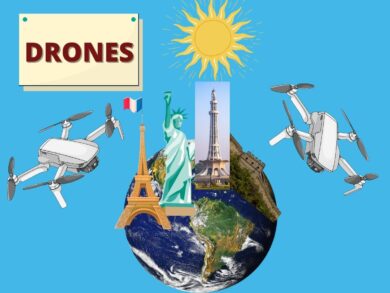Drones have rapidly become a game-changing technology, with applications across a range of industries. While they were initially developed for military purposes, they are now being used for a variety of civilian applications, including delivery and surveillance. In this blog post, we’ll take a closer look at the potential of drones in these two areas and explore some of the challenges that must be addressed as they become more widespread.
Delivery
One of the most promising applications of drones is in the delivery industry. Amazon and other retailers are already testing drones for package delivery, with the goal of improving delivery times and reducing costs. In theory, drones can deliver packages more quickly and efficiently than traditional delivery methods, particularly in densely populated urban areas.
However, there are several challenges that must be addressed before drone delivery can become a reality. First, there are technical challenges related to drone design and operation. Drones must be able to navigate complex urban environments, avoid obstacles, and operate safely and reliably in a range of weather conditions. There are also regulatory challenges related to airspace management and safety, as well as public perception and acceptance of drones.
One promising development in the field of drone delivery is the use of autonomous drone networks. These networks use a combination of sensors and algorithms to coordinate the movement of multiple drones, allowing them to work together to deliver packages more efficiently. This approach could help address some of the technical challenges associated with drone delivery, and could also reduce the costs and complexity of operating drone fleets.
Surveillance
Drones are also being used for a wide range of surveillance applications, including law enforcement, border patrol, and search and rescue operations. Drones equipped with high-resolution cameras and other sensors can provide real-time aerial footage of a given area, enabling authorities to monitor activity and respond to potential threats more quickly and effectively than traditional surveillance methods.
However, the use of drones for surveillance also raises important ethical and legal questions. One concern is the potential for drones to be used for mass surveillance, with little regard for individual privacy rights. There are also concerns about the potential for drones to be used in ways that violate international law, such as targeted killings or other forms of extrajudicial violence.
To address these concerns, it will be important to establish clear legal and ethical frameworks for the use of drones in surveillance. This could include measures such as requiring a warrant for drone surveillance, establishing clear rules for data collection and retention, and limiting the use of drones in situations where there is a high risk of harm to civilians.
Conclusion
Drones are an exciting and rapidly evolving technology, with the potential to transform a range of industries. However, as with any new technology, there are also challenges that must be addressed in order to ensure that drones are used safely and ethically. In the realm of delivery, there are technical and regulatory challenges that must be addressed in order to make drone delivery a viable option. In the realm of surveillance, there are ethical and legal concerns that must be taken into account to protect individual privacy rights and prevent the use of drones in ways that violate international law. With the right approach, however, drones have the potential to improve efficiency, enhance public safety, and save lives in a range of applications.











